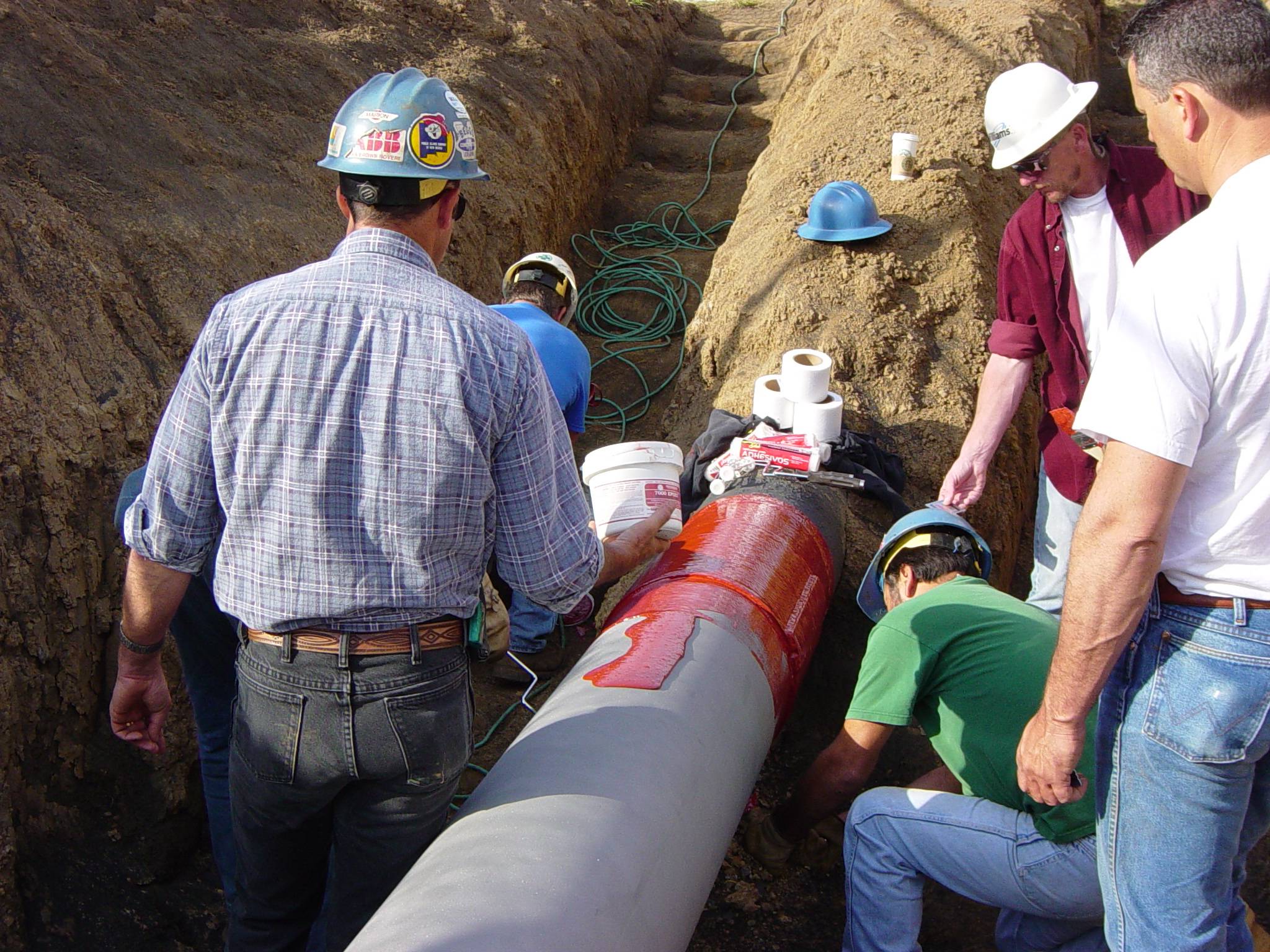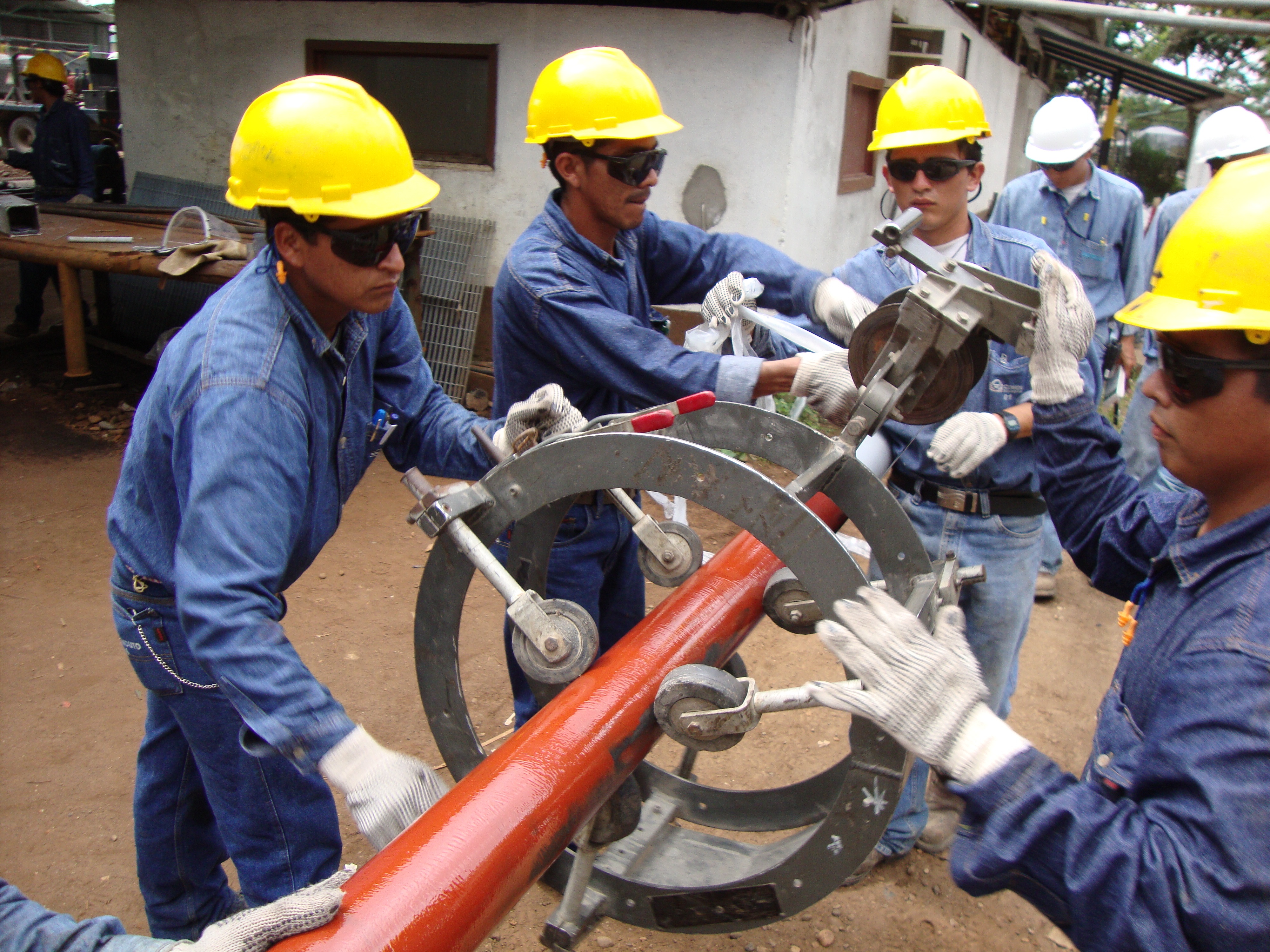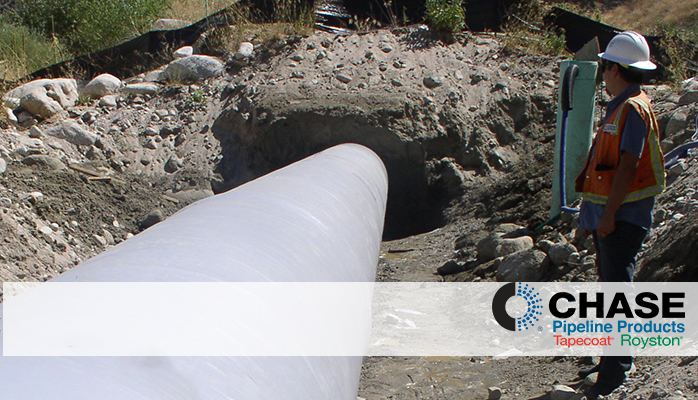High-temperature corrosion protection coatings are developed to meet the harsh environmental...
Worker Safety When Applying Pipeline Coatings: How to Avoid Hazardous Conditions
 Did you know that as little as one cubic yard of soil can weigh as much as a 3,000-pound forklift?
Did you know that as little as one cubic yard of soil can weigh as much as a 3,000-pound forklift?
If you are in a pipeline trench surrounded by soil, and it caves in, the result can be permanent disability or death. This sounds harsh; however, according to the National Institute of Occupational Safety and Health (NIOSH), this type of incident is a major cause of death associated with work in excavations, accounting for over 40 fatalities per year.
Also read: Preventing Worker Deaths from Trench Cave-ins
Whether you’re in a trench to a set pipe or apply tapes, liquid or other anti-corrosion products to the pipeline, worker safety must never be compromised. To safeguard yourself in trench situations, there are three things to keep in mind:
- Proper shoring of trenches is required in pipeline construction to prevent collapse
- Familiarize yourself with the products and hazards associated with the products’ applications.
- Know the risks in the area you are working and take the proper steps to protect yourself from the risk of injury.

Key terms to help you protect yourself:
A. Safety Data Sheet (SDS) – SDS’s are documents provided by manufacturers about their products. Information within an SDS generally includes physical properties, chemical properties, instructions for safe handling, emergency control measures, etc. An SDS usually contains information about but is not limited to
- product identification,
- hazard(s) identification,
- confirmation/information about ingredients,
- first-aid measures,
- firefighting measures,
- accidental release measures,
- handling and storage,
- exposure controls / personal protection,
- physical and chemical properties,
- stability and reactivity,
- toxicological information,
- ecological information,
- disposal information,
- transport information,
- regulatory information, and
- other facts, including date of preparation or last revision.
B. Personal Protective Equipment (PPE) - PPE is the gear worn to minimize exposure to hazards that cause serious job site injuries and illnesses, including those resulting from contact with chemicals or with physical, electrical, mechanical, or other workplace hazards. PPE often includes items such as gloves, safety glasses, safety shoes, earplugs, hard hats, respirators, reflective vests, coveralls and full body suits. PPE for each job condition varies and special attention should be taken to determine all safety equipment required for the job.
C. Trench excavation - According to the Occupational Safety and Health Administration’s (OSHA) trench excavation fact sheet, all trenches four feet or deeper must have ladders, steps, ramps or other safe means of ingress and egress for workers.
D. Protective systems – Unless an excavation is undertaken in stable rock, OSHA mandates that protective systems be put in place for trenches five feet or deeper. These systems include trench boxes that shield workers, hydraulic support structures used to shore up the sides of the excavation and sloping the soil at an angle away from the excavation site. The sides of the excavation can also be benched so the walls of the excavation form large steps away from the site.
E. Shoring* - The process of temporarily supporting a building, vessel, structure, or trench with shores (props) is employed when there is a danger of collapse during repairs or alterations. During an excavation, shoring systems provide safety for workers in a trench and speed up the excavation process.
*Note: Shoring should not be confused with shielding. Shoring is designed to prevent collapse whereas shielding is only designed to protect workers when collapses occur.

Worker safety tips for applying corrosion protection coatings:
- Wear proper personal protective equipment (PPE).
- Implement, enforce, and follow a comprehensive written safety program.
- Abide by all posted procedures and avoid unsafe conditions.
- Report all hazards and unsafe conditions to designated personnel.
What can be done to promote worker safety while applying pipeline coatings? First and foremost, one must be competent to know and recognize the different types of hazards, abide by safety program requirements, and take necessary measures to prevent unsafe conditions.
Selecting and applying appropriate anti-corrosion products to pipelines in above- or below- grade environments require t a high level of attention be given to the manufacturer’s published technical data sheets, SDSs, and application procedures to ensure safety measures are followed.
Useful links:
Preventing Worker Deaths from Trench Cave-ins
Trenching and Excavation Safety
Agreement Establishing An Alliance Between The Occupational Safety and Health Administration U.S. Department Of Labor & The American Pipeline Contractors Association
Water, Sewer, Pipeline, and Communications and Power Line Construction
Chase Corporation’s team of technical consultants are available to assist you with pipeline product information to meet your application needs. Please contact us.




